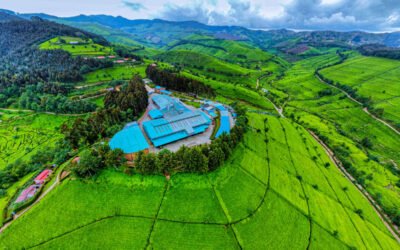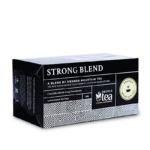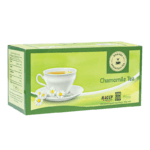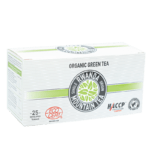Introduction: The Hidden Secrets in the Letters on Your Tea Package
Have you ever noticed those mysterious abbreviations on tea packages? BP, PF, FBOP… These codes may seem cryptic to the uninitiated consumer, but they contain valuable information about the quality, manufacturing process, and even the flavor profile of your favorite tea. In the mountainside plantations of Rwanda, Tanzania, or Kenya, these classifications are the product of century-old expertise, passed down from generation to generation.
Tea classification is a universal language that allows producers, traders, and enthusiasts to communicate about leaf quality. For African teas, whose reputation for excellence continues to grow in the global market, mastering this system is essential to fully appreciate the continent’s rich offerings.
In this article, we invite you on a journey into the heart of tea grading systems, with a particular focus on the African varieties that are the pride of our continent.
Origins and Importance of Tea Grading Systems
A History Rooted in Colonization and Trade
The grading system we know today has its roots in the British colonial era, particularly in India and Ceylon (now Sri Lanka). With the introduction of tea plantations in East Africa in the early 20th century, this system was adapted to local production conditions.
According to the Food and Agriculture Organization of the United Nations (FAO), the standardization of tea grades has helped structure the international market and establish price references. For Africa, whose production represents approximately 15% of the global market, this classification has become an essential tool for adding value.
Why These Classifications Are Crucial
Classification is not just a matter of marketing or tradition. It reflects fundamental characteristics that determine:
- The intrinsic quality of the leaves
- Their processing method
- The tea’s aromatic potential
- Its market value in international markets
For African producers, especially those from the Highlands of Rwanda or the Kenyan plateaus, mastering these codes is a way to position themselves in the premium segment of the market and extract greater added value from their production.
Understanding the Main Black Tea Grading Codes
Featured Snippet: The main black tea classifications include:
- FBOP (Flowery Broken Orange Pekoe): broken leaves with buds
- BP (Broken Pekoe): medium-sized broken leaves
- PF (Pekoe Fannings): small particles used for tea bags
- Dust: very fine particles for quick infusion
The Orange Pekoe System: Foundation of Modern Classification
The “Orange Pekoe” classification system is the most widespread in the world of black tea. Contrary to what one might think, “Orange” does not refer to color or taste, but is believed to be a tribute to the House of Orange-Nassau of the Netherlands, involved in the tea trade in the 17th century.
This system primarily classifies teas according to:
- Leaf size
- Presence of buds (tips)
- Leaf integrity (whole or broken)
Decoding the Main Codes
BP (Broken Pekoe): The Balance Between Strength and Aroma
The BP grade designates medium-sized leaves that have been broken during production. This category is particularly prized for teas from Mount Kenya and the highlands of Tanzania.
BP Characteristics:
- Quick infusion (3-4 minutes)
- Pronounced amber color
- Medium to full body
- Robust flavor ideal for breakfast
African BPs, especially those from Kenya, are recognized for their strength and ability to pair perfectly with milk. They form the basis of many “English Breakfast” blends marketed worldwide.
PF (Pekoe Fannings): Everyday Versatility
Pekoe Fannings represent particles smaller than BPs. This grade is widely used in commercial tea bags due to its quick infusion and consistent flavor.
PF Characteristics:
- Very quick infusion (2-3 minutes)
- Intense, dark color
- Pronounced body
- Powerful flavor but less nuanced than higher grades
In the African context, PFs from Malawi and Zimbabwe have gained a reputation for reliability in export markets, often serving as a base for blends destined for the Middle East and Eastern Europe.
FBOP (Flowery Broken Orange Pekoe): Accessible Excellence
FBOP is one of the most sought-after grades in the broken tea category. The term “Flowery” indicates the presence of buds (tips) that bring finesse and aromatic complexity.
FBOP Characteristics:
- Moderate infusion (4-5 minutes)
- Bright coppery color
- Balanced body
- Complex aromatic profile with floral notes
FBOPs from the Rwandan highlands, particularly those produced by Rwanda Mountain Tea truth Rustiro and Mata Garden, are distinguished by their delicacy and fruity notes that rival the best teas from Assam and Darjeeling.
Beyond the Classics: Special and Premium Grades
GFOP, TGFOP, and FTGFOP: The Hierarchy of Excellence
For connoisseurs seeking exceptional experiences, these classifications represent the pinnacle of quality:
- GFOP (Golden Flowery Orange Pekoe): contains a significant proportion of golden buds
- TGFOP (Tippy Golden Flowery Orange Pekoe): even richer in buds
- FTGFOP (Finest Tippy Golden Flowery Orange Pekoe): the cream of the crop
These exceptional grades are beginning to appear in the offerings of some innovative African producers, particularly in Kenya and Rwanda, who are seeking to compete with Asian tea gardens in the ultra-premium segment.
According to the International Tea Committee, African teas of these superior grades have seen their market value increase by 35% over the past five years, testifying to growing international recognition.
Grades Specific to African Productions
Africa has developed certain specific classifications adapted to its production methods and the characteristics of its teas:
- BMF (Broken Mixed Fannings): an intermediate grade popular in Kenya
- PD (Pekoe Dust): widely used in instant tea production
- D1 (Dust 1): the finest grade, appreciated for its strength and instant infusion
These specific classifications reflect the adaptation of the traditional system to the realities of African terroir and the demands of the international market.
Impact of Grading on the Tasting Experience
How to Choose the Grade Suited to Your Preferences
Knowledge of grades allows for informed choices based on your consumption habits:
| Grade | Ideal for | Infusion time | Accompaniment |
|---|---|---|---|
| FBOP | Pure tasting | 4-5 min | Without milk |
| BP | Breakfast | 3-4 min | With or without milk |
| PF | Daily consumption | 2-3 min | With milk or lemon |
| Dust | Iced tea, chai | 1-2 min | Spices, milk, sugar |
The Influence of African Terroir on Flavor Profiles
Contrary to common belief, the same grade can present radically different aromatic profiles depending on its origin:
- An FBOP from Rwanda will often present fruity and floral notes
- An FBOP from Kenya will generally be more malty and robust
- An FBOP from Uganda may reveal woodier, warmer notes
This diversity makes African teas rich and deserves to be explored by enthusiasts in search of new tasting experiences.
Challenges and the Future of African Tea Grading
Towards Valorization of African Identity in Classification
Although the traditional system has proven itself, many experts, including the African Tea Producers Association, advocate for an evolution that would further highlight the continent’s specificities.
Initiatives are emerging to create controlled designations of origin, similar to those for wine, which would better valorize exceptional terroirs such as:
- Teas from the Virunga Mountains (Rwanda)
- Productions from the Kenyan highlands
- Tea gardens of the Malawi Mountains
Innovation and Sustainability: New Classification Criteria
Beyond traditional characteristics, new criteria are beginning to integrate into classification systems:
- Organic certification
- Fair trade
- Carbon footprint
- Agroforestry practices
These criteria, supported by organizations such as Fairtrade Africa, could eventually enrich or even transform the traditional classification system to better meet the expectations of contemporary consumers.
Conclusion: From Knowledge to Appreciation
Understanding tea grading codes means accessing a higher level of appreciation for this ancient beverage. For African teas, these mysterious letters – BP, PF, FBOP – are much more than technical jargon: they tell the story of expertise, terroir, and a constant quest for excellence.
The next time you enjoy an African tea, take a moment to observe its classification. Behind these simple letters lies a world of nuances waiting to be explored.








